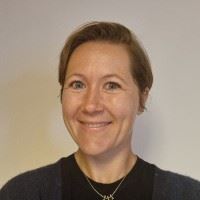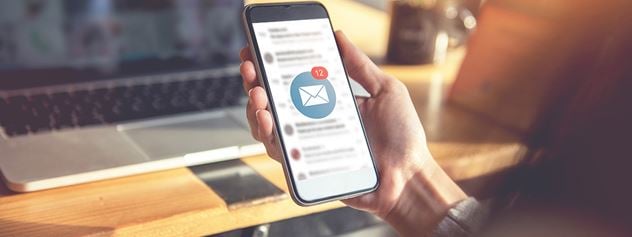“Bristle worms and soldier fly larvae have shown great potential as a source of proteins and omega-3 fatty acids for feed production. But if they are to be grown on fish sludge, it’s crucial to assess the biosafety of the process, says SINTEF researcher Andreas Hagemann.
One of the dangers of feeding fish sludge to bristle worms and soldier fly larvae to use as feed is that the sludge may contain various undesirable substances, like heavy metals and environmental toxins that can be absorbed by the animals.
The research team from SINTEF and the Norwegian Institute of Marine Research have investigated to what degree such substances can enter the food chain. SINTEF, the Norwegian Veterinary Institute and the Norwegian Institute of Marine Research have collaborated on the research project called SecureFeed.

Research scientist Andreas Hagemann works in the SINTEF Sea Lab. Experiments have been conducted here to see whether bristle worms and soldier fly larvae that feed on sludge from farmed fish can be used as food for low-trophic species. Photo: Smidesang og Lyng
In the project, the researchers also looked at the potential for transmitting prion diseases and whether bristle worms and soldier fly larvae could transmit bacteria and viruses from the salmon sludge.
Thorough analyses are needed
The Institute of Marine Research has been responsible for analyses of heavy metals and other undesirable substances. The project analysed approximately 50 fish sludge samples from various facilities along the Norwegian coast.
“Looking at the safety of using sludge in a possible food production chain is really important,” says Veronika Sele, a researcher at Norwegian Institute of Marine Research.

Veronika Sele at the Norwegian Institute of Marine Research.
The researchers conducted various analyses, including heavy metals and organic pollutants like PCBs and dioxins.
“These are substances that are regulated. This means that an upper limit value has been set for the permitted content in both feed and feed ingredients,” she says.
Dioxins and PCBs have been around for a long time
Dioxins and PCBs are a group of organic pollutants that break down slowly and can accumulate in the food chain.
PCBs were previously used in a number of products by the industry, but have been banned from production for a long time, since they can have several serious negative effects on animals and humans.
The researchers therefore compared the levels of these substances in the fish sludge with the levels usually seen in fish feed. These are pollutants that are already present in the environment, and often accompany the marine and fatty feed ingredients like fish oil.
“We’ve found that the levels in sludge and feed are roughly similar. Some of the sludge samples contained levels close to the upper limit,” says Sele.
Metals are a challenge
When it comes to heavy metals like cadmium and arsenic, several of the sludge samples contained levels above the limit value set for feed. In addition, the researchers found other metals, such as copper, iron, zinc and aluminium – but the content varied greatly in the different sludge samples.
“Not much is known about the level of organic pollutants in sludge and the possibility of transfer to insects, so the project is really just in the starting block in this regard.”
“We found elevated levels of some undesirable substances in certain samples. This should be investigated further,” says Sele. She thinks that fish sludge should be monitored for these metals to improve the database, and to gain control over what can be transmitted in a possible value chain.

Soldier fly larvae feed on sludge. Or fish poo, if you will. Photo: Norwegian Institute of Marine Research
Uncertain how much is taken up by the animals
But how much of the heavy metals and organic pollutants do bristle worms and soldier fly larvae take up when they eat fish sludge?
“We’ve observed that some of the metals, PCBs and dioxins can increase in soldier fly larvae. The levels were right at or exceeded the limit values set for feed ingredients,” says Sele.
“Not much is known about the level of organic pollutants in sludge and the possibility of transfer to insects, so the project is really just in the starting block in this regard. We also need to do more research on several organic pollutants that we haven’t investigated yet.”
The researchers do not have as much data on the transfer potential from sludge to the bristle worm. They plan to look more closely at the transfer of some organic pollutants to assess what might end up in them.
Lack of regulations
The research has given us completely new knowledge about what sludge consists of, both in terms of its nutritional value and the potential risks with regard to further use.
“The goal has been to find out whether it is safe to use sludge in a biocircular production of feed with bristle worms and insects,” says Hagemann. This will require analyses from several different plants and over a longer period of time. We find that most plants can deliver good-quality sludge. But we’ve also seen some outliers,” says the SINTEF researcher.
Our results show that with regard to limit values, most of the sludge samples could be given the green light to be used as feed for low-trophic animals. But the authorities must get on the pitch so that the regulations we have can be adapted to this solution,” he says.
Published articles from the project:
- Characterization of nutrients and contaminants in fish sludge from Atlantic salmon (Salmo salar L.) production sites – A future resource
- Aquaculture sludge as feed for black soldier fly: Transfer of chemical and biological contaminants and nutrients
- Transfer and bioaccumulation of chemical and biological contaminants in the marine polychaete Hediste diversicolor (OF müller 1776) when reared on salmon aquaculture sludge
- Fish Sludge as Feed in Circular Bioproduction: Overview of Biological and Chemical Hazards in Fish Sludge and Their Potential Fate via Ingestion by Invertebrates



